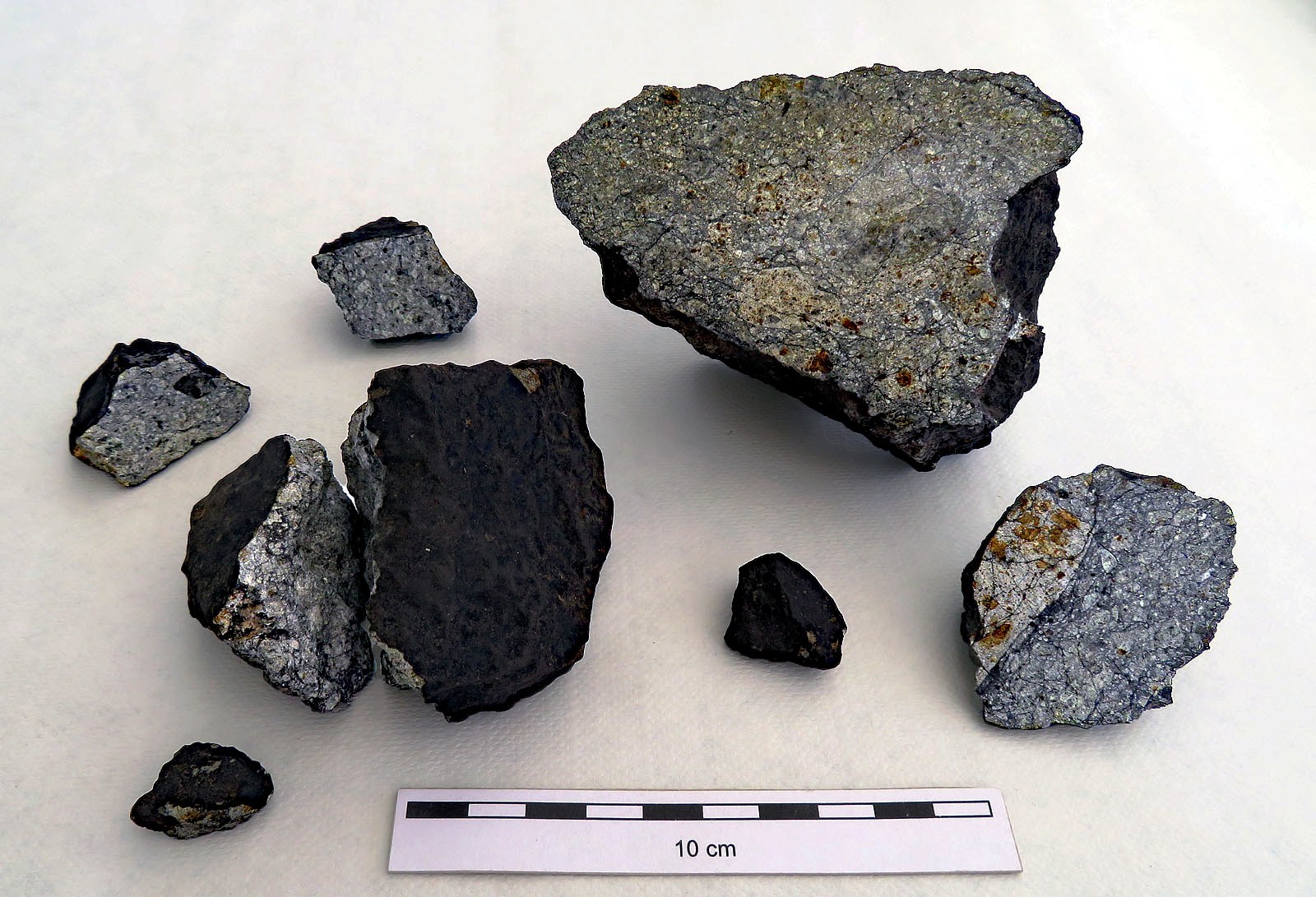|
Roll Overs:
#1
#2
#3
#4
#5
#6
|

|
|
Copyright (c) jnmczurich. Use allowed - include photographer's name: jnmczurich.
|
1.01 kg total. LL6
TKW 19 kg. Observed fall 21 July 2002, near Jigawa, Nigeria.
  
jnmczurich writes:
Happy birthday Kilabo. Kilabo has been on Earth for 18 years. It fell from heaven on July 21, 2002.
The whole group of Kilabo collection samples shown weighs 1.01 kg.
Reference Metbase 7.2:
Mr Mallam Yahava Muhammad of Hadejia, Nigeria, observed a brilliant fireball moving S to N; two loud detonations were heard several minutes later; Mallam Audu and several neighbours in Kilabo heard the stone fall and later recovered it; the meteorite was found in the crater measuring 35 cm wide by 20 cm deep in sandy soil; it had fragmented on impact into many pieces, the largest of which was 2.2kg; a total weight of ~19kg was recovered; stones were recovered in five villages in the region, with the largest piece in Kilabo;
Classification (P.Sipiera, Harper College; M.Zolensky, JSC Houston): olivine Fa31.1, CaO<0.09, predominantly <0.05; low Ca-pyroxene Fs27.1 PMD=0.02; abundant coarse-grained plagioclase, mainly An84Or5, ranges from An61Or25 to An86Or3; coarse-grained diopside and troilite are abundant; pentlandite is a minor phase; the meteorite is brecciated, with thick black shock veins present; shock stage S3, weathering grade W0, S.S.Russell et al., Met. Bull. 87, MAPS, 2003, 38, No. 7 (Suppl.), p.A189. Magnetic susceptibility, P.Rochette et al., MAPS, 2003, 38, p.251. Description and mineral analysis, K.J.Cole and P.P.Sipiera, LPSC, 2003, 34, abs. #1135. |
Click to view larger photos
#1
#2
#3
#4
#5
#6
|
Found at the arrow (green or red) on the map below
|
|
| |
John Divelbiss
7/21/2020 3:43:58 PM |
looks like a LL6 to me...very nice Juergen. |
Anne Black
7/21/2020 11:53:29 AM |
Thank you Juergen. Great pieces from a great Collection, and with great provenance. Christian Anger left us much too soon.
|
Juergen / jnmczurich
7/21/2020 6:39:48 AM |
The collection samples shown are definitely Kilabo samples. These and many other Kilabo samples were imported directly from Nigeria by the late Chr. Anger/Austria, from whom I had received these samples in exchange for other material many years ago. Every Kilabo I know shows many shock veins inside and, as you can see in the pictures, are strongly brecciated (S4). This is also corresponding to the classification, see the discription from Metbase 7.2. The only thing that Kilabo (LL6, almost metal-free in cut faces) and Thuathe (H4/5, very metal-rich in cut faces) have in common is the fall date. Both stones accidentally fell from the sky on the same day, July 21, 2002. |
Chicken from NSW, AUS
7/21/2020 5:06:03 AM |
I*ve never seen Kilabo that looks like that. What*s the source? Are you sure it*s not Thuathe or something else? |
| |
|